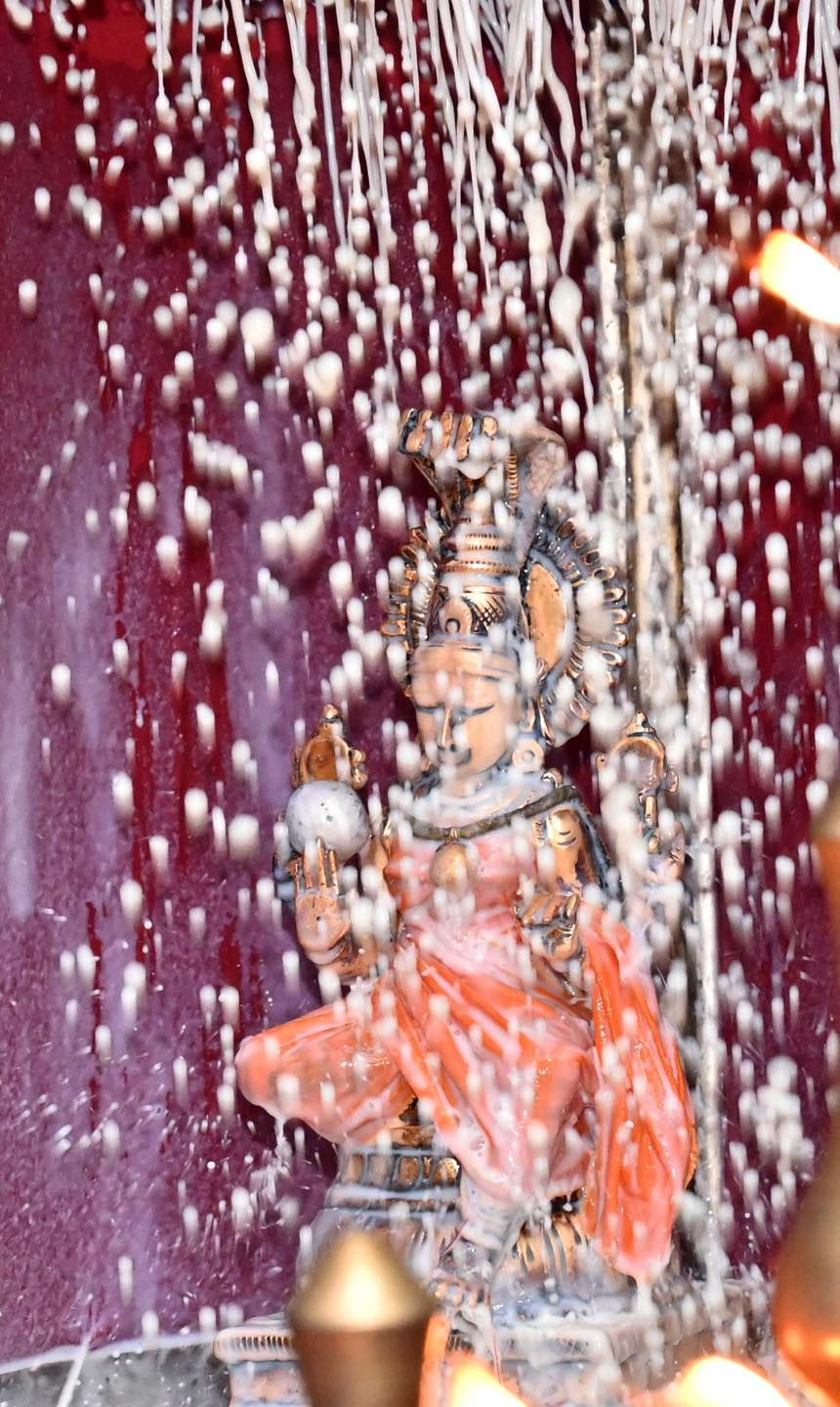
Poojas
Pooja (Puja in Sanskrit) - A Ritual of Love
Pooja (puja in Sanskrit) is a Tamil word meaning offering from the heart. Pooja refers to many Vedic rituals based on nature generally performed in temples or homes. At Sri Narayani Peedam and Sripuram, many types of poojas (rituals) are conducted throughout the day. These are open to locals, pilgrims, and visitors from all over the world.
To find out about pooja events in Australia, please join our newsletter.
“The ritual of pooja is an expression of love for the Divine, for Mother Nature.
Pooja creates positive energy in the world.”
—Sri Sakthi Amma


Purpose of Pooja
The ultimate purpose of pooja is to facilitate a connection with the soul through offerings of love. Offerings of love bring peace and joy, opening people's hearts to follow a dharmic path. On a larger scale, the prayers and rituals conducted by Sri Sakthi Amma are for universal peace and well-being.
Sponsoring pooja at the temples is a practical way to create peace for the world and in one's life, earn merit for oneself and one's community, and make a spiritual offering with a powerful sankalpa (intention). Your contribution helps support the costs of the physical offerings in the form of food, herbs, flowers, etc., and facilitates the priest's ceremonies on your and your loved ones' behalf. Whether you want to fortify specific prayers or support new moon or full moon rituals and particular festivals, the opportunities are auspicious and manifold.
For those who already have their own devotional path, beholding these rituals may encourage and inspire them to go deeper within their personal faith and practice.

Abhishekam
Abhishekam is an ancient purification ritual practiced in temples across India. The beautiful and elaborate process of abhishekam is accompanied by Vedic chanting.
Offerings such as water, coconut water, milk, curd, honey, fruits, sandalwood powder, turmeric, herbs, sacred ash, rice, and tulasi (sacred basil) are used in the ritual bathing of the deity. It is an offering of love and pure devotion, symbolic of cleansing one's inner self with positive thoughts.

Gho Pooja
Gho Pooja (ritual honoring the cow) is conducted daily at Sri Narayani Peedam. In Hinduism, Kamadhenu or Gho Mata (Divine Mother Cow) is revered as sacred. The cow serves humanity unconditionally all its life. Because of this, the cow is referred to as the ‘Universal Mother.’
Her essential qualities are her purity and her generous giving nature, providing and sustaining equally for her own calves and human life. Kamadhenu, known as the wish-fulfilling cow, is also seen as a messenger, similar to the western idea of angels. It is believed that within the actual body of Gho Mata, all the forms of the gods reside.

New Moon Pooja: Ammavasai
Bala Narayani Abhishekam is performed on New Moon day, the darkest day of the moon phase. New Moon is a day to release all negativities and to set new goals. Many people start new things, new projects on a New Moon day for it to grow like the waxing moon. It represents new beginnings as we release the old and start afresh. 'Bala' refers to youthfulness and strength. In Narayani Peedam Bala Narayani Abhishekam is performed on New Moon day, as it clears all negativities, negative energies, blockages, and bestows good blessings upon us.
Full Moon Pooja in the lunar calendar is known as purnima pooja. The moon has been worshipped since ancient times, and performing pooja on a full moon day can facilitate peace of mind, calmness, and Divine blessings. It is a time of completion and new beginnings as the moon has completed one cycle around the earth. This day is very auspicious as it is the brightest light of the moon cycle, the moon energy in its fullness is magnified, having reached its zenith, and therefore considered a powerful time for spiritual practice. Due to the nature of this time, it is believed to be easier to connect to our soul and the universe.
After a full moon yagam (fire ritual), Sri Sakthi Amma gives a discourse, followed by sprinkling theertham (holy water) on all present. This can charge and energize us with positive energies. In Narayani Peedam, and many other places in our worldwide organizations, special full moon yagams and poojas are performed, and the community unites. These are powerful prayers to usher in all prosperity and blessings into our lives. It's a celebration! Sign up for our newsletter to be invited to an event near you.

Poornima Pooja:
Celebrating the Full Moon










